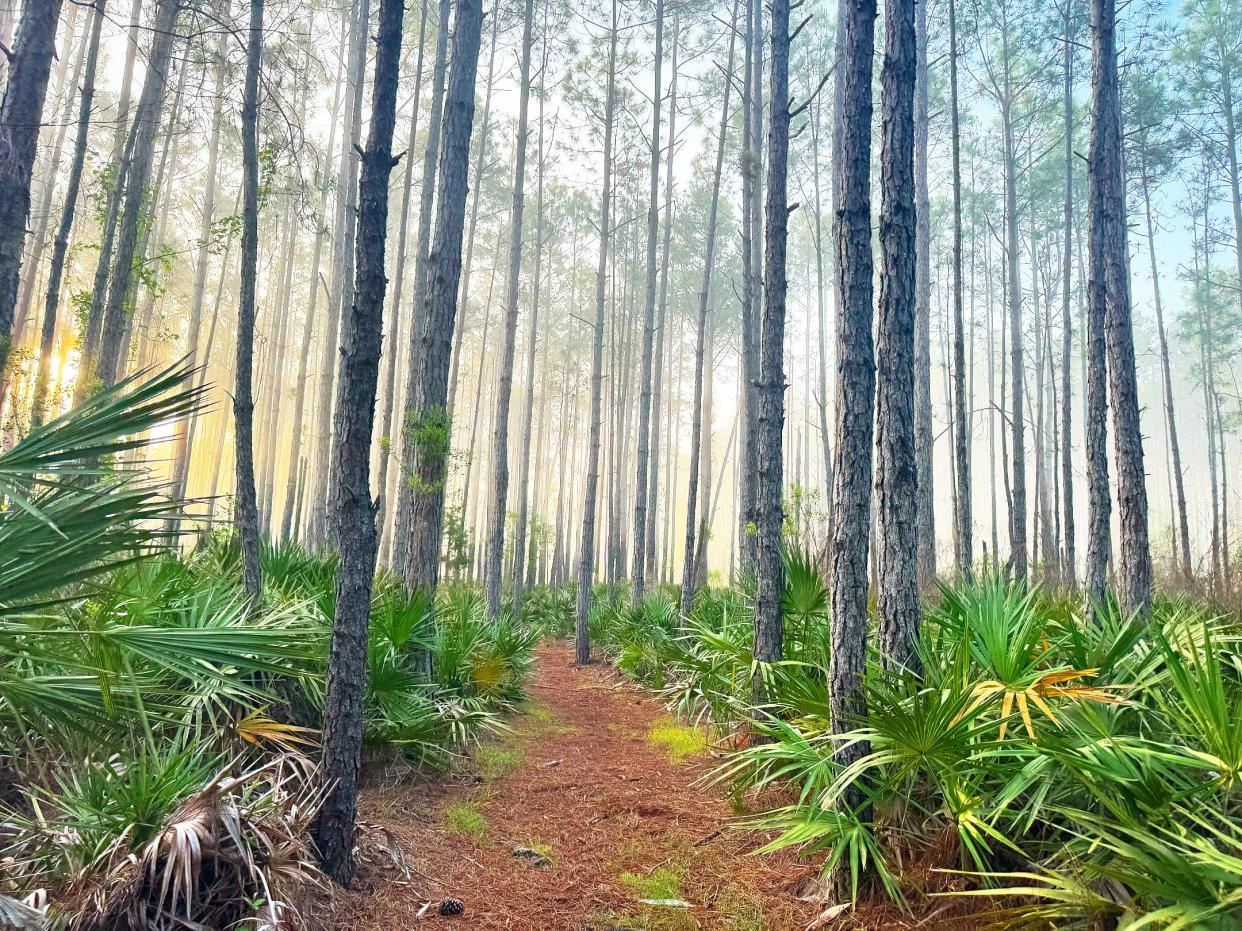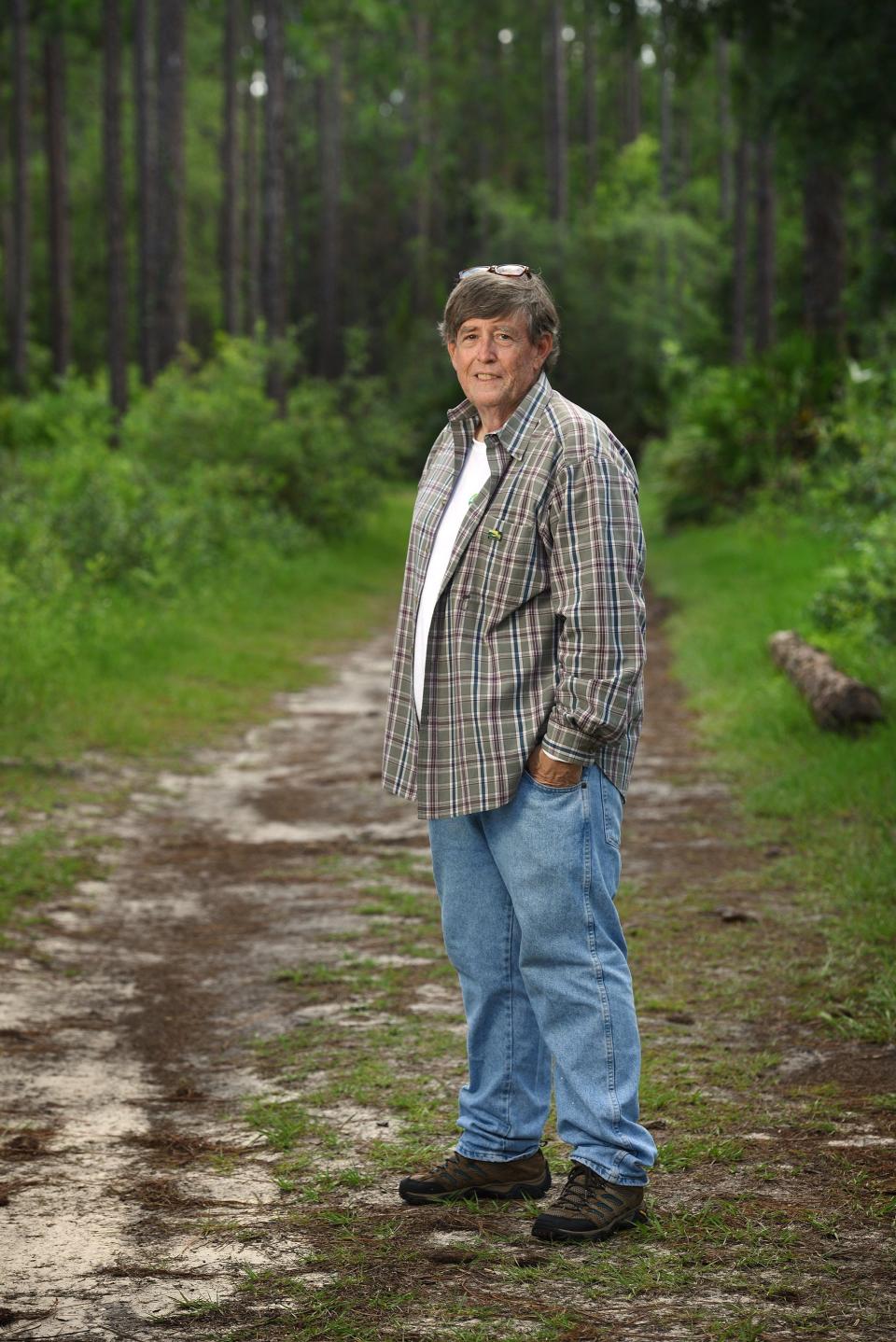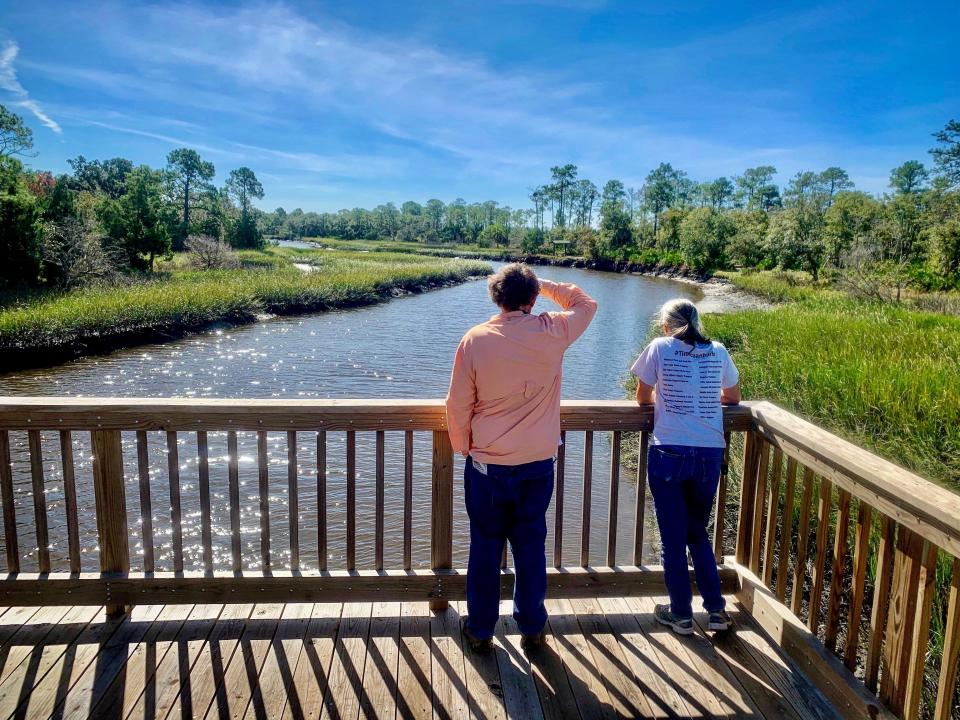Woods: Preservation Project forever changed Jacksonville — by not changing parts of it

John Delaney has told the story before. But 25 years after the start of a project that forever changed Jacksonville — by forever preserving significant pieces of it — it’s worth telling again.
It begins with a fishing trip.
Delaney was near the end of his first term as mayor of Jacksonville when he got in a boat with Fred Franklin — a longtime friend, the city’s general counsel at the start of Delaney’s time in office, and an avid fisherman.
They headed up Sisters Creek.
More: Mark Woods: Give thanks for 7 Creeks — old Florida with new name
More: "If downtown is the heart, this is the soul out here"
More: Mark Woods: Remembering what the 'Dutton Island Five' accomplished in Atlantic Beach
Even though they were just maybe 5 miles, as the crow flies, north of where Delaney grew up, this was a piece of Jacksonville he hadn’t seen before. He already was mesmerized by the view — the saltmarsh, oyster beds and tree-line banks — and then dolphins surfaced and swam alongside the boat.
“I still remember it just like it was 10 minutes ago,” Delaney said.
The next day, back at City Hall, he mentioned the fishing trip, saying it was one of the prettiest places he’d ever seen and that it would be a shame to see it change dramatically. While some of that part of Jacksonville already was in the Timucuan Ecological and Historic Preserve, significant pieces of land weren’t preserved.
Rick Mullaney, who had become general counsel after serving as chief of staff, said: “Why don’t we think about buying it?”
In those 24 hours, the seeds of the Preservation Project were planted.
When it was launched in 1999, the project involved identifying and acquiring Duval County’s most vulnerable, environmentally sensitive lands and preserving them before it was too late.

Today, Jacksonville likes to boast having the largest urban park system in America with more than 80,000 acres of public lands. About 50,000 acres were acquired, all across Jacksonville — using a mix of local, state and federal funding — as part of the Preservation Project.
Delaney will long be remembered for this. Deservedly so.
But the 25th anniversary seems like a fitting time to make sure Mark Middlebrook — who oversaw much of the project — isn’t forgotten.
From Times-Union to City Hall
A couple of weeks after the unveiling of the Preservation Project, Delaney hired Middlebrook, a Times-Union editor.
Delaney envisioned putting Middlebrook’s investigative reporting skills to use inside city government as sort of an internal watchdog — someone who could find a scandal before it ended up in the newspaper.
Middlebrook did a bit of that. But he also quickly started helping Susie Wiles, then Delaney’s chief of staff, with the Preservation Project. And when she got immersed in other things, like the Better Jacksonville Plan that was approved by voters in 2000, he ended up as executive director of the Preservation Project.
Middlebrook not only oversaw it during Delaney’s remaining time in office, he has been involved in Jacksonville’s parks and preservation ever since. He became executive director of Timucuan Parks Foundation, a nonprofit with the mission of promoting and preserving our parks.
If you want to know the history of pieces of land all over Duval County — including who used to own it, what it took to acquire it, and what could have happened to it — ask Middlebrook.
At 72, he’s now a senior adviser for Timucuan Parks Foundation. He and his wife, Gayle, have three sons, five grandchildren and an Australian Shepherd dog that, like Middlebrook, loves Betz-Tiger Point Preserve.
When I suggested we meet somewhere to talk about the 25th anniversary — maybe at one of his favorite Preservation Project sites — that’s where he picked.
Betz-Tiger Point Preserve, located between Edwards Creek and Pumpkin Hill Creek, once seemed destined to be a subdivision. More than 500 acres of pine flatwoods and maritime forest were acquired by the city in 2003. And now they’re a part of the 7 Creeks Recreation Area, more than 5,000 acres that, in many ways, symbolize the success of the Preservation Project — a cooperative effort involving the City of Jacksonville, Florida State Parks and the National Park Service.
We sat at a table in a pavilion on the north end of the preserve, a spot that Middlebrook says has one of the prettiest views in all of Jacksonville.
“Look at this,” he said, pointing at the view. “It’s as important today as it was in 1999.”
If anything, with that part of the county now booming with development, it’s even more important.
'Up and running in 45 days'
It brings to mind what happened in 1999.
While a lot of cities and counties in Florida were creating land acquisition programs, or talking about creating them, many were moving quite slowly.
“We were able to get the Preservation Project up and running in 45 days,” Middlebrook said.
They catalogued the available developable land in Jacksonville and created a score sheet with categories such as growth management, protecting environmentally sensitive land and water quality. The initial goal was to purchase 10 to 20 square miles of land. That grew to more than 80 square miles — about a tenth of Jacksonville.
Pieces of the Preservation Project can be found all over Duval County. Just a few examples: Dutton Island Preserve in Atlantic Beach, Castaway Island Preserve on the Intracoastal, Julington-Durbin Preserve on the Southside, Seaton Creek Preserve on the Northside and, another one of Middlebrook’s favorites, Camp Milton Historic Preserve on the Jacksonville-Baldwin Trail.
It was a $300 million plan. Delaney started it with $21 million in city money, and voters approved another $50 million in the Better Jacksonville Plan. But much of the funding came from state and federal programs, along with private donations. And almost every purchase involved a partner of some sort.
Delaney credits Middlebrook with figuring out how to make the Preservation Project work. He cites examples of how Middlebrook found funding and became an expert in areas that, when they started, they didn't know much about.
“He’s a dreamer and he’s creative,” he said. “I get credit for the Preservation Project down through the years, but I really try to give a ton of it to Mark. After that fishing trip, I was just sort of bemoaning what could happen. Rick Mullaney triggered the idea of doing something. And then Middlebrook came in and ran with it. And here we are.”
The work continues
Here we are. We did one of the hardest parts. We preserved pieces of natural Florida. But we need to do more, not just preserve more significant pieces of land and water, but do more with what we have.
It’s one thing to be able to brag about having the biggest park system — a boast we're able to make partly because we have the largest city in the Lower 48 — but how do we make it the best?
We need more of the basics, the kind of things that now can be found at the 7 Creeks area. Parking, restrooms, trails, signs, kayak and boat launches, etc. And that requires doing something that, by pretty much any measure, we've been behind other cities: spending money on these places.
That’s true not only of the natural preserves around town, but of downtown.

For more than 20 years, I’ve been writing about how if we want to have a truly great park system, we need a great riverfront park — a great linear park, on both sides of the river.
The stadium deal between the city and the Jaguars could lead to a big step in that direction — if the Council passes it with the more than $50 million for parks that was included in the Community Benefits Agreement.
Back when the Preservation Project turned 20, I used that as an excuse to spend a day in the 7 Creeks Recreation Area with Middlebrook. He said something then that I’ve repeated since: “If downtown is the heart of the city, this is the soul.”
Returning to that area recently, thinking about what lies ahead, we talked about how we need both, downtown parks and expansive preserves, heart and soul.
“They're all related,” Middlebrook said. “They're all a part of one city. It's such an opportunity. Most cities don't have what we have going on here: the opportunity to remake downtown and create this network of preserves.”
The Preservation Project is in the past. But the work continues. The nonprofit that supported it morphed into the Timucuan Parks Foundation. Mayda Velez, a 10-year staffer, recently became executive director of an organization that continues to support the parks. And the North Florida Land Trust, also celebrating its 25th anniversary, continues to protect pieces of Northeast Florida through land donation and acquisition.
Preserving old Florida as important today as in 1999.
If anything, it’s even more important.
mwoods@jacksonville.com
(904) 359-4212
This article originally appeared on Florida Times-Union: Jacksonville's Preservation Project started 25 years ago


